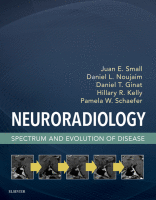Physical Address
304 North Cardinal St.
Dorchester Center, MA 02124

Introduction Anomalies arising from the third and fourth branchial cleft remnants are quite rare. In particular, branchial abnormalities related to the pharynx are only a small subset of the already rare collection of branchial cleft lesions. Branchial abnormalities with a…

Introduction There are various forms of orbital infection, including those listed in the Jain-Rubin classification: 1. Periorbital cellulitis 2. Orbital cellulitis with or without intracranial complications 3. Orbital abscess with or without intracranial complications a. Intraorbital abscess, which may arise…

Introduction Deformities along the dorsal aspect of the thoracic spinal cord are occasionally identified on magnetic resonance imaging (MRI), often in patients presenting with myelopathy ( Fig. 36.1 ). A variety of nontumoral etiologies result in deformities of the dorsal…

Introduction Hirayama disease is a rare, slowly progressive, and self-limiting cervical myelopathy related to neck flexion in young adults. It is characterized by a pure focal amyotrophy in the C7-T1 innervated musculature. It presents classically in an adolescent male with…

Introduction Spinal cord astrocytomas are quite uncommon and account for only 3% to 4% of all central nervous system (CNS) astrocytomas. Furthermore, although intracranial glioblastomas are the most common primary brain parenchymal neoplasm, spinal cord glioblastomas are exceedingly rare. The…

Introduction Spinal cord ependymomas are the most common intramedullary tumor in adults and the second most common tumor in children after astrocytomas. Ependymomas typically present within the fourth decade of life and affect men more often than women. A higher…

Introduction Subacute progressive ascending myelopathy (SPAM) is an exceedingly rare and poorly understood complication of spinal cord injury. As the natural history of this process is quite peculiar, it is especially important for the imaging interpreter to be aware of…

Introduction The diagnosis of spinal cord infarction (SCI) has changed significantly in the past decade, largely due to the contributions of neuroimaging. Historically SCI was considered to be rare, with the definitive diagnosis requiring postmortem examination and probable diagnosis requiring…

Introduction The term syringomyelia was introduced by the French pathologist and clinician Charles-Prosper Ollivier d'Angers in 1827 to described cystic cavities in the spinal cord. More specifically, hydromyelia refers to dilatation of the central canal lined by ependymal cells and…

Introduction Vertebral hemangiomas (VHs) are benign vascular tumors frequently encountered as incidental findings on computed tomography (CT) or magnetic resonance imaging (MRI). The vast majority are quiescent, with classic imaging features that are reassuring to radiologists and patients, and are…